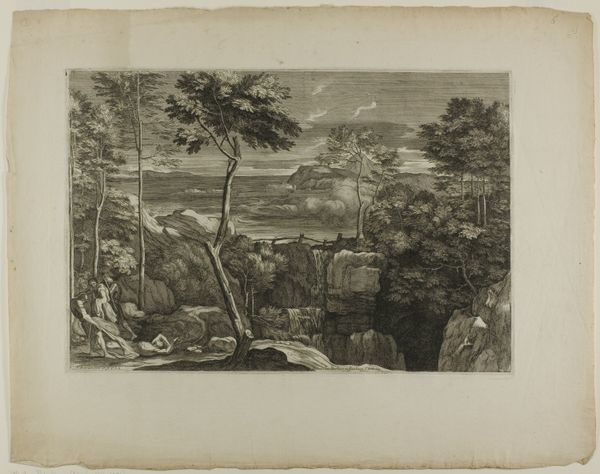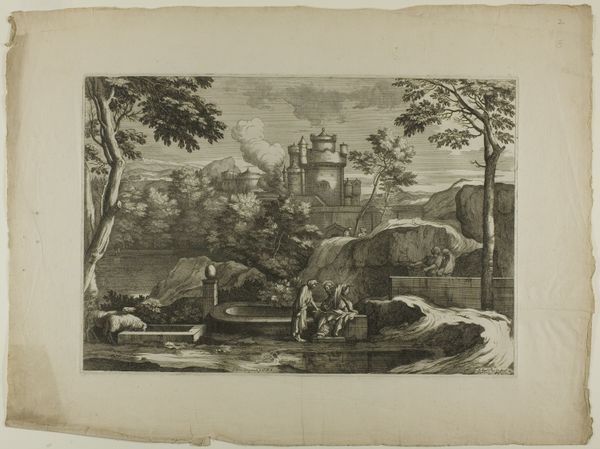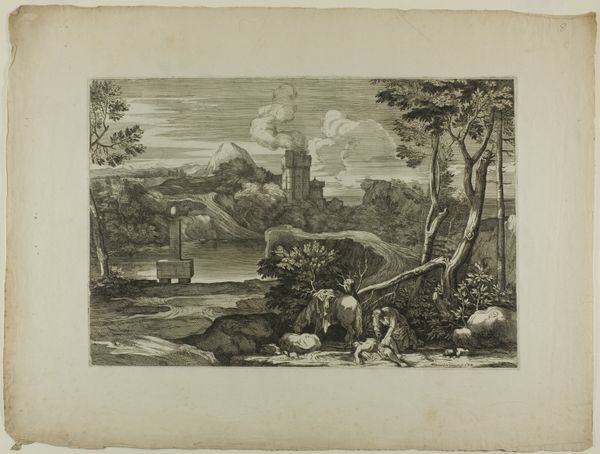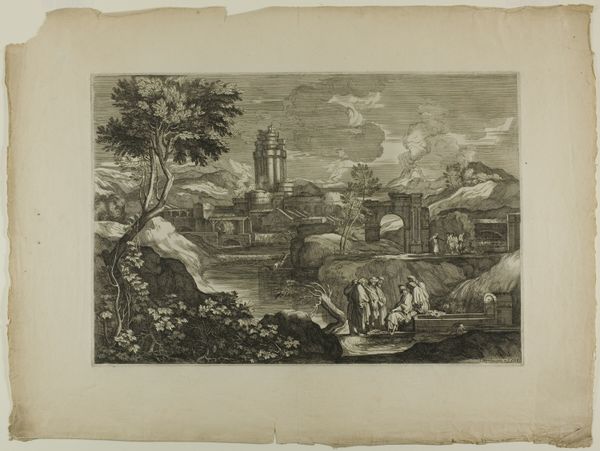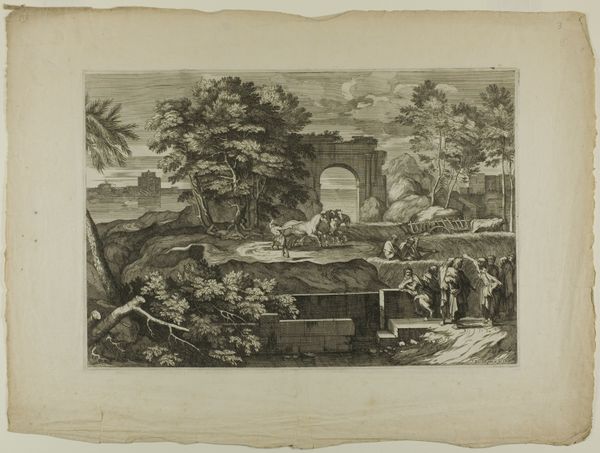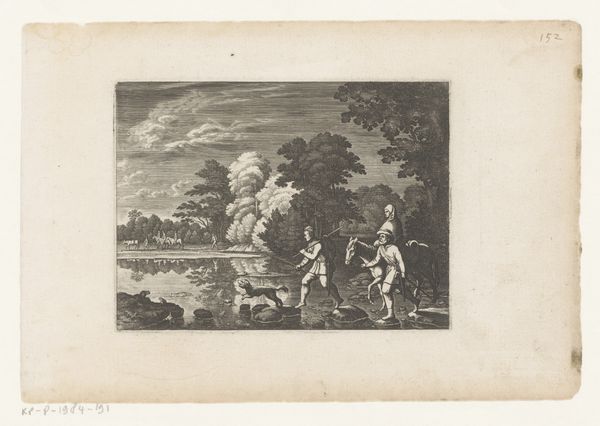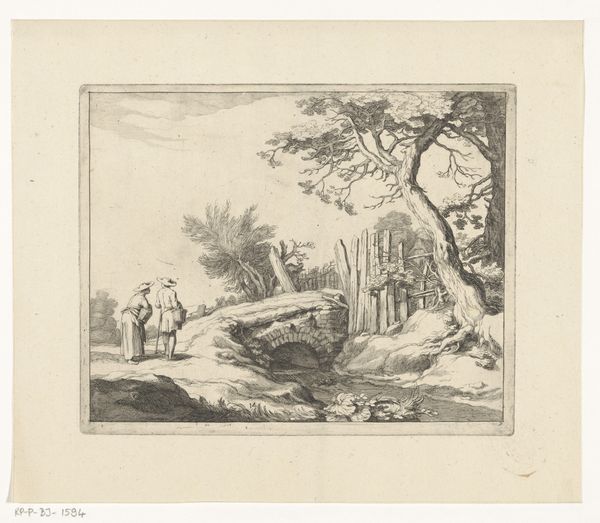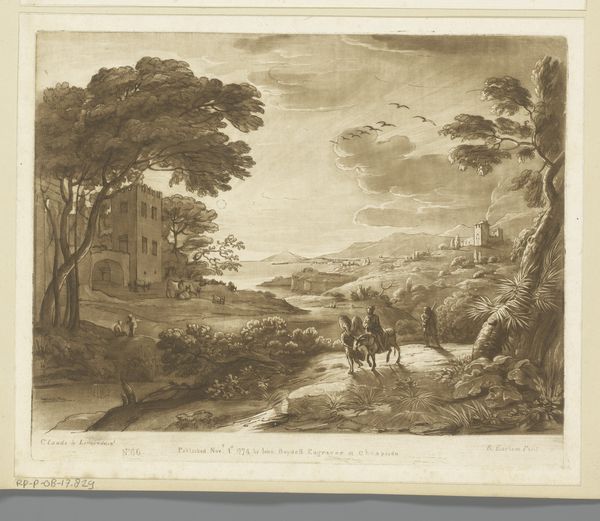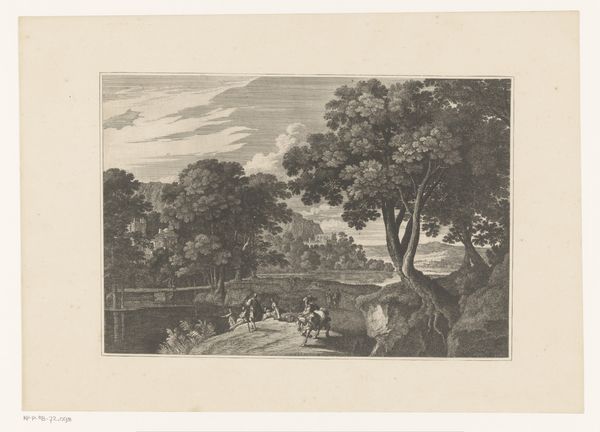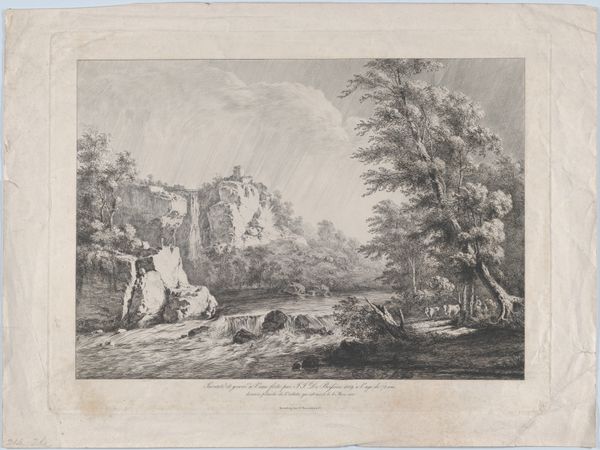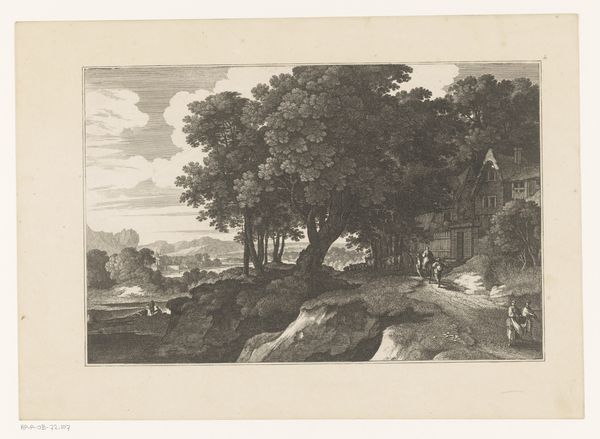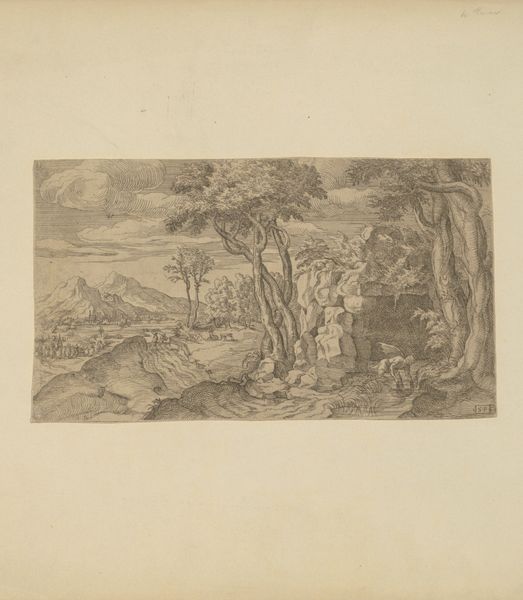
The Good Samaritan Takes the Wounded Man from his Donkey c. 17th century
0:00
0:00
drawing, print, etching, paper
#
drawing
#
baroque
# print
#
etching
#
landscape
#
paper
#
genre-painting
#
history-painting
Dimensions: 293 × 432 mm (plate); 431 × 594 mm (sheet)
Copyright: Public Domain
Curator: Let’s turn our attention to this etching from around the 17th century, "The Good Samaritan Takes the Wounded Man from his Donkey," by Sebastien Bourdon, currently held at the Art Institute of Chicago. Editor: Immediately, I'm struck by the way the scene seems both desolate and determined. The stark lines of the etching emphasize the drama but there is also great tenderness visible in the Samaritan’s stance. Curator: Indeed. Bourdon uses line work masterfully to direct the viewer’s eye. Consider how the diagonals of the landscape elements—the river, the rocky outcroppings, the bridge in the distance—all converge near the central figures, drawing us to the focal point of human interaction. Editor: Yes, but consider also what that setting does to the story! Placing this biblical parable in a broken, vaguely militarized zone underlines the desperation of the wounded man and also emphasizes the radical nature of compassion. He wasn't just helping someone, he was going against the social order. Curator: You're right to point out that contrast. The architecture hints at a classical past, now crumbling, adding a layer of temporal commentary on the timelessness of moral action and a specific nod to the landscape painting tradition of the baroque era. It's an allegorical reflection of the artist’s environment using established conventions to impart broader meaning. Editor: Precisely. By emphasizing the context, Bourdon doesn't just illustrate a story; he reframes the question. Who do we help, when the world seems against us? Curator: The way he balances these artistic decisions to deliver an evocative depiction using a printmaking method… remarkable. Editor: Seeing this as more than just a biblical scene really does underscore how profoundly simple acts of care can impact our understanding of societal relationships. Curator: Thank you. I think this print is worth a bit more study next time I’m here. Editor: Agreed! There's a timeless question to be examined more carefully in light of our current climate of divisions.
Comments
No comments
Be the first to comment and join the conversation on the ultimate creative platform.
